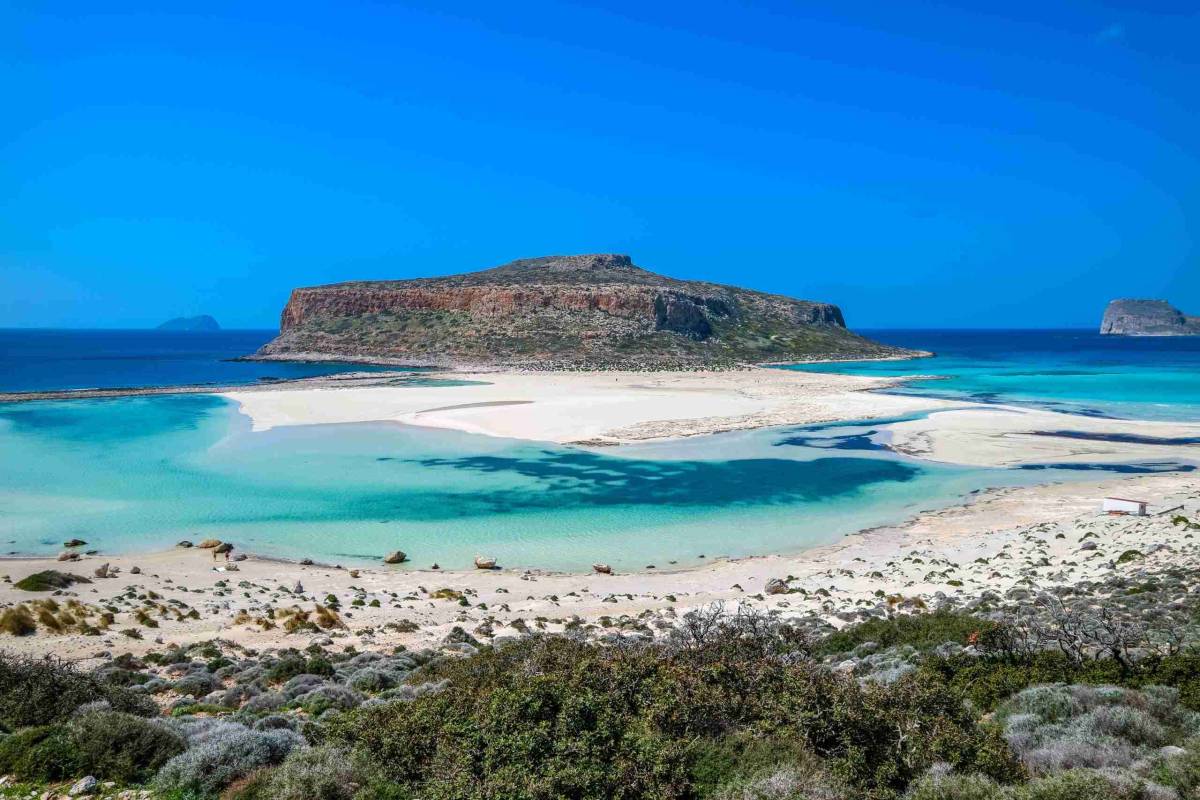
The Balos lagoon is located 56 kilometers northwest of Chania and 17 kilometers from Kissamos between Cape Tigani and Gramvousa Peninsoula.
It is not just a beach but one of the most famous and most photographed places in Crete. It is an exotic place with white sand and turquoise, blue-green waters. In some places the sand has a pink color due to the crushed shells. It forms a lagoon protected by Eremi Gramvousa, the island just 2 miles northwest of the lagoon. It attracts thousands of tourists every year and has starred in countless photos and videos on social networks.
The lagoon is protected by the NATURA 2000 program because it hosts many species of flora and fauna with 400 species of plants, 25 endemic to Crete, 3 of which are found only here. Many migratory birds, black petrels and cormorants stop here and breed. Loggerhead turtles and Monkfish seals find shelter here.
The best way to visit Balos is to board one of the boats that run scheduled routes from the port of Kissamos. The trip lasts an hour and gives the traveler the opportunity to admire the rugged shores of Cape Gramvousa, swim in the waters of Imeri Gramvousa and visit its fortress. The fort was a den of pirates and rebels and legend has it that a great treasure is still hidden on the island. A 1968 shipwreck is an integral part of the landscape. The view of Balos is fascinating and the landscape with the low vegetation and countless cacti reminds people of Africa. Tickets to Balos can be sold online and there are snack bars and refreshments on the boats.
Many tourists choose to go to Balos beach by car. The dirt road that starts from the village of Kalyviani is quite dangerous with steep cliffs on the right and, after 8 kilometers, it leads to the parking area of the beach. Then the hike begins for about half an hour to reach the beach. For those renting a car, this route is considered off-road and is not covered by insurance. Also, car use is considered the main source of ecosystem disturbance.
The hike from Kaliviani village takes three hours and the best time to get there is early in the morning before all the other tourists arrive. The return, at sunset, is exciting.
There are umbrellas, sunbeds and a makeshift canteen on the beach. The best times to visit Balos to avoid the crowds are the beginning or the end of the summer. In any case, visitors must approach the site with the required sensitivity and respect and obey the rules in force for the protection of the marine and terrestrial environment in the area.
(More articles about Crete on www.gomega.gr)